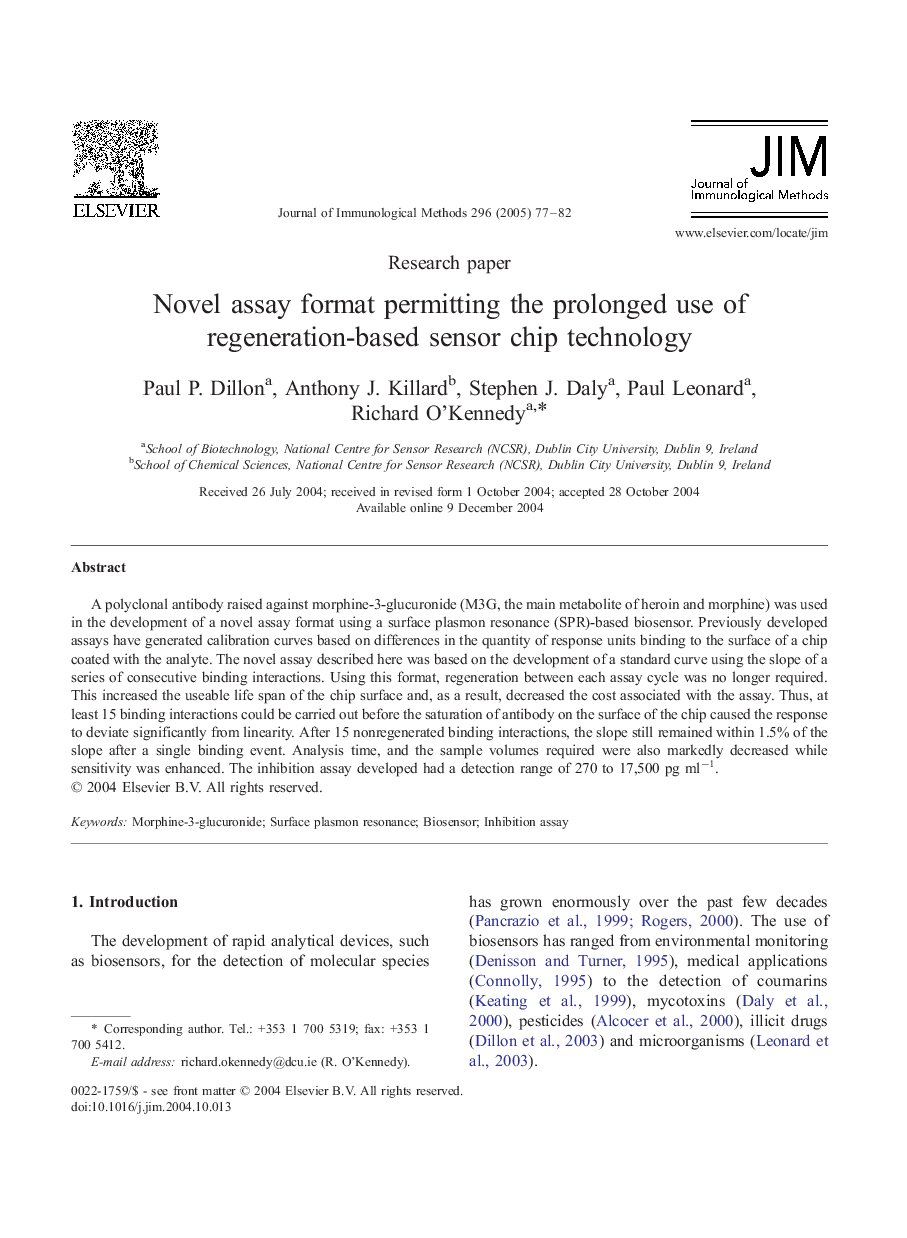| Article ID | Journal | Published Year | Pages | File Type |
|---|---|---|---|---|
| 9902400 | Journal of Immunological Methods | 2005 | 6 Pages |
Abstract
A polyclonal antibody raised against morphine-3-glucuronide (M3G, the main metabolite of heroin and morphine) was used in the development of a novel assay format using a surface plasmon resonance (SPR)-based biosensor. Previously developed assays have generated calibration curves based on differences in the quantity of response units binding to the surface of a chip coated with the analyte. The novel assay described here was based on the development of a standard curve using the slope of a series of consecutive binding interactions. Using this format, regeneration between each assay cycle was no longer required. This increased the useable life span of the chip surface and, as a result, decreased the cost associated with the assay. Thus, at least 15 binding interactions could be carried out before the saturation of antibody on the surface of the chip caused the response to deviate significantly from linearity. After 15 nonregenerated binding interactions, the slope still remained within 1.5% of the slope after a single binding event. Analysis time, and the sample volumes required were also markedly decreased while sensitivity was enhanced. The inhibition assay developed had a detection range of 270 to 17,500 pg mlâ1.
Related Topics
Life Sciences
Biochemistry, Genetics and Molecular Biology
Biotechnology
Authors
Paul P. Dillon, Anthony J. Killard, Stephen J. Daly, Paul Leonard, Richard O'Kennedy,
